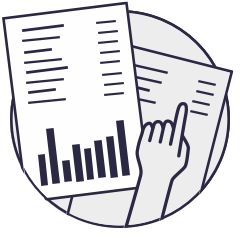Statutory Sick Pay
As an employee, you will find yourself having to deal with various issues you have not had to previously, one such being the issue of Statutory Sick Pay (SSP).
SSP must be paid to employees who pay Class 1 National Insurance Contributions, but whom are at a certain time unable to work because of illness. As with most such payments, there are various criteria that must first be met in order to be eligible. In general, the standard SSP rate for employees in the UK currently stands at £92.05 per week – and as long as they meet certain criteria. To help you get a better understanding of the law and what you as a business owner are responsible for, we have put together the following information.
Sick pay – the basics
To be eligible for SSP, there are certain criteria that employees must meet. Firstly, a person must be sick for at least a period of four consecutive days – including weekends and Bank Holidays – this is known as a ‘Period of Incapacity for Work’ (PIW). One of these four days must be what is called a Qualifying Day – which is a day that the person claiming SSP would normally work. It is also important to know that there are no restrictions regarding how long an employee must have worked for you before being eligible for sick pay – meaning they will be able to make such claims as soon as they begin working for you. Furthermore, there are no age limits to SSP – meaning everyone from junior members to more senior executives will all be able to claim sick pay.
Important notes for employees
In addition to the many things that an employer must do regarding sick pay, there is also criteria that an employee must also meet in order for SSP to be successfully claimed. Firstly, an employee must notify their employer of their illness as soon as they can – generally within one-week of the first day of illness. Furthermore, an employee must provide medical evidence of their illness after a certain period of absence. This period is usually one-week but can depend on an employer’s own requirements. It should also be noted that SSP is not paid to employee for the first 3-days of their illness – these 3-days are known as ‘Waiting Days’ – with SSP beginning after this period.
If for example, an employee begins their working day and then falls ill and goes home, that day will not be considered a ‘Day of Incapacity’ for SSP purposes. However, there are exceptions. For example, for shift workers who fall ill the same day after finishing their shift, that day will be considered a Period of Incapacity and they will, therefore, receive sick pay.
Periods of Incapacity
A Period of Incapacity (PIW) is when an employee is absent from work due to illness for a period of four consecutive days or more. All days are included in this period, including weekends and Bank Holidays. PIW can be linked and treated as one combined period if the gap between such sick periods is less than 56 days. In total, SSP can be paid for a maximum of 28-weeks, following which an employee may then be able to claim Incapacity Benefit or Support Allowance. In such cases, employees must provide the employee with an SSP1 form which they are required to complete and submit to their local Job Centre.
Fit notes are the new sick notes
Traditionally called ‘Sick Notes’ the government decided to change the name to ‘Fit Notes’ in 2016. The government has also set out regulations regarding these fit notes to better protect both employees and employers. If an employee is absent for 7-days or less, they are not required to produce a fit note. However, it is likely that most businesses will request the employee to complete a ‘Self-Certification’ form detailing the reason for their absence for absences less than one-week. If you are a business owner, you are required to have such documentation in place – if you are unsure about what such a form should include, a quick Internet search will provide you with a selection of simple templates from which you can work from.
If an employee is off work due to illness for longer than 7-days, they are required to produce a certificate from their Doctor clearly explaining the reasons why they couldn’t work – this is the fit note. It is up to the employee to contact their Doctor and request this note, as well as supply it to their employee in a timely manner. The new ‘fit note’ has been simplified and now features only two options for GPs – that of declaring an employee ‘totally unfit for work’ or them being ‘maybe fit for some work’ – this classification can often come with further advice from the GP regarding what the employee can and cannot do.
Whilst employees cannot withhold SSP if they receive this certificate late, employees can delay SSP if an employee is late notifying them of their initial sickness. If an employee is ill for seven days or more, they need to get the certificate from their Doctor explaining why they couldn’t work. An employer cannot withhold SSP if submission of a fit note is delayed, however, they can withhold SSP if an employee is late in notifying them that they are sick.
Fit notes – additional important information:
- Fit notes can only be issued by GPs for a maximum of 3-months in the first 6-months of illness
- GPs are advised to select the ‘Maybe fit for work’ option if they believe the employee can perform some of their duties – even if they are not completely well and they are to get support from their employer.
- If the employee’s situation changes during the fit note period, and they feel they are now able to return to work and full normal duties, it is their responsibility to see their GP for their fit note to be amended to reflect this.





